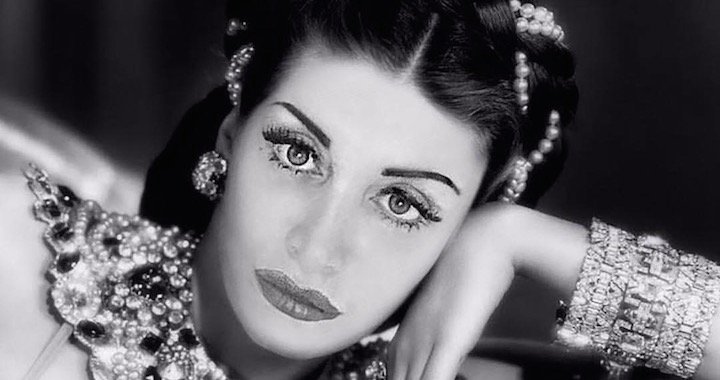
Contemporary art as medical treatment
An interview with Italian art collector Rebecca Russo
27/11/2015
Rebecca Russo is the Marina Abramović of the art collecting world. She is a strong and visionary person who has carried contemporary art outside of its traditional space of perception and representation, thereby also giving new meaning and mission to the practice of collecting art. In a way, one could say that Russo’s collection and her own approach to collecting is a testimony to the power of art. Literally, in fact, because Russo has also managed to scientifically prove that contemporary art can be used to heal. Art as a therapeutic instrument. Medicine.
Since 2013, Russo’s patented Videoinsight® method has been used in clinical psychology and psychotherapy as well as the field of medicine, and its efficacy is compared to that of the Rorschach Test in modern-day therapy. The method is based on Russo’s conclusions from her own experience and research as a professional psychologist and psychotherapist that some works of contemporary art can evoke a powerful psychological effect and therefore have psychodiagnostic and psychotherapeutic potential.
“I progressively and spontaneously amassed a collection of artwork, above all photographs and videos, which – in my opinion – deals extremely effectively with the main psychodiagnostic and psychotherapeutic elements characterising the clinical practice,” Russo writes in her first book, Videoinsight®: Healing with Contemporary Art. Published in 2010, the book can be considered Russo’s own intimate and professional diary because it also contains her own story and the story of the meaning of art in her own personal development.
“I am profoundly convinced that Art and Life are closely tied, inextricably bound, just like birth and death. In the process of creating Self and everyday life, each person performs an artistic and creative experience,” she writes. Russo also looks at her own life as the merging, integration of and cooperation between three areas: personal life, a passion for art and career.
Russo’s collection, called the Videoinsight® Collection, is currently one of the largest collections of contemporary art in Europe. It consists only of artwork that has the Videoinsight® effect, or, the power to make people look into themselves, feel, think, dream, converse, remember, learn, reflect.... “Art can help solve psychological distress because it moves the personality on various levels,” she says.
In 2013, Russo established the Videoinsight® Art and Science Foundation, which has since branched into several directions. The Videoinsight® method is used in medicine and psychotherapy, there are Videoinsight® centres and special Videoinsight® rooms at hospitals around the world, one can study the Videoinsight® method at university, and a Videoinsight® prize has been awarded annually since 2012.

Marina Abramović. Dragon Heads, 1990. Videoinsight® Collection
Russo was born in Italy. Her mother is a painter, and Russo studied music and piano performance before turning to psychology. She became interested in psychology after reading Image and Mind by American psychologist and neuroscientist S. M. Kosslyn. Russo’s dissertation was titled The Contributions of the Rorschach Test to the Nosographic Differentiation of Schizophrenic Diseases and resulted from a study of the delivery of the Rorschach Test to 50 patients diagnosed with schizophrenia. Contemporary art entered her practice quite naturally and instinctively after she put some photographs on the walls of her office. “I was extremely surprised by the impact these images have had on nearly everyone I have met in my sessions,” she explains.
Our conversation took place at the Videoinsight® Centre in Turin. Located in a former 19th-century ink factory, the almost futuristic white room involuntarily reminds one of Stanley Kubrick’s 2001: A Space Odyssey. Everything here is white – the walls, ceiling, floor, table, chairs, couches – and the only touch of colour is found in the artwork. Standing out against the blinding whiteness, the art pulls visitors in, demanding of them a completely different level of concentration.
How did you get involved in art?
There is a confluence between art and life. Total confusion. I’ve always been attracted to art, ever since I was a kid. I don’t remember the exact moment it began. I can only tell you when I started to collect. I was 20 years old when I bought my first piece of artwork. And right from the very beginning my concept and choices were based on insight. I choose what I need, what I feel is good for me at that specific moment in life. I choose with my brain, my heart and my soul. Very subjectively, considering that I began by choosing artwork for myself. I realised that art supported me in my personal development and also in my career. In effect, I tested out the power of art on myself.
I’m the only curator of my collection. I’ve chosen all of the works of art myself, and the collection now has a significative number of pieces. My collection shows my life, my personal life, my evolution as a person, as a woman. And, seeing as I’m a doctor – a psychotherapist – it also shows my professional competence. The Videoinsight® Collection is the result of total integration between art and life, between art and profession. The collection is therefore named Videoinsight®.
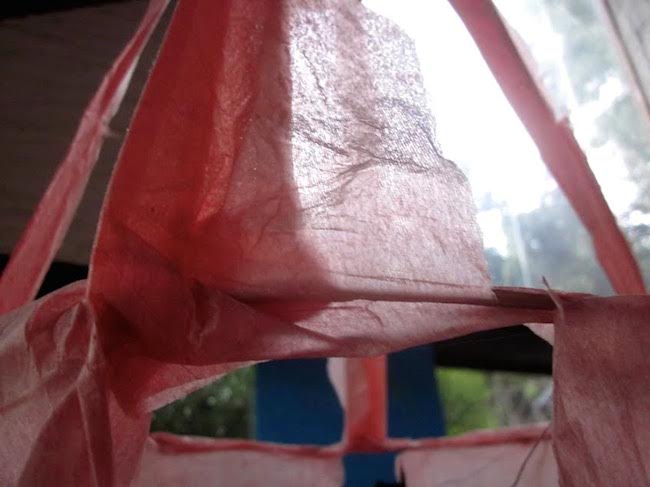
Alejandro Valenzuela. Birth Place, 2015. Videoinsight® Collection
Does art really have the power to change anything – in people, in the world?
Yes, I believe art does have this power. In addition, and most importantly, I’ve been able to prove this with international scientific medical research. At the beginning, when I was still very young, I was spontaneous and also naive. But, when I looked back on my collection ten years later, I began to systematise it. I arranged it according to specific themes. My collection has artwork that deals with the relationship with one’s mother and father, sexuality, aggression.... And the collection is always being expanded; it is in progress, it is an ongoing project.
As a psychotherapist, I was once one of the experts on the Rorschach Test, and I used visual images (in this case, it was the famous Rorschach ink blots) to determine the condition of my patients. And then one day I decided to put a piece of artwork on the wall in my office. It was a completely spontaneous decision. And it was a very natural choice, because my office at the time was completely white. I quickly realised that some of my patients were very drawn to the artwork, and so I began to collect their interpretations of it. I collected the visions and dreams that the artwork had inspired in them. There were even some patients who seemed particularly attached to the art. They were not collectors. Just normal people.
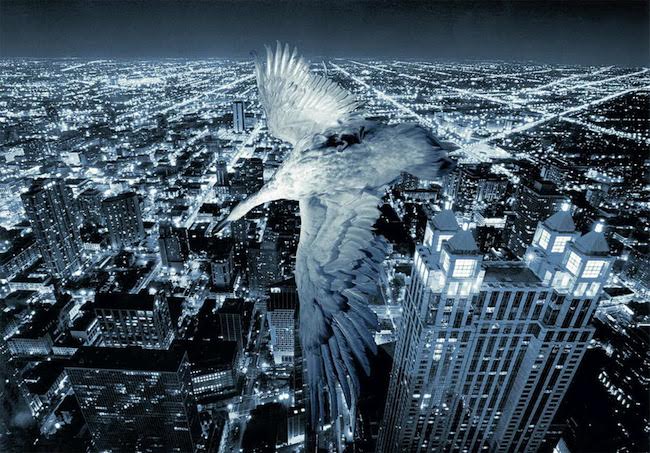
Robert Gligorov. La Buona Novella, 2007. Videoinsigh® Collection
People with no prior knowledge about or education in art?
Yes. And, seeing my patients’ interest, I began to change the artwork on the wall, all the while continuing to collect their spontaneous interpretations about each piece of artwork. I had an unbelievable amount of collected material. For example, I’ve collected about 500 interpretations of Robert Gligorov’s photograph La buona novella (2007), which you see in here right now. Optimistic, happy people see a bird flying free and beautiful above the city [in this particular photograph, that city is Chicago]. Depressed people say, “Good Lord, this bird is dead.” Some people see the bird as a woman, other see a man. There have been mothers who’ve seen a stork carrying a child. The interpretation reveals each person’s situation and character. The quantity of material was important, because it provoked me to think intuitively about how contemporary art could be something similar to a Rorschach Test. And so I decided to go on, and I showed and showed ever more pieces of artwork to my patients, observing and collecting their interpretations. That’s all I did, about 50.000 hours in all. And then, after about ten years, I decided I was ready to share my experience and results with others. I worked like a scientist with art, in a new way, because it was not art therapy – I never asked my patients to paint or make anything themselves.... It was not art psychology, because I was not interested, for example, in the personality psychology of Thomas Ruff. For me, it was important to use art in order to help people. Both in diagnostics and as a form of therapy.
First, I decided to share my experience with Marina Abramović, whom I consider a soul-sister of sorts. She’s a very strong woman. We met, and I understood that I had taken the right step – Marina was very open to the idea and encouraged me even more. She said, “You must tell it to the world.” After that conversation I did everything. I shut myself away from the world for 32 days, and while I was alone I wrote my first book, Videoinsight®: Healing with Contemporary Art.
I finished the book in one month – I wrote all day and all night, with only a bit of sleep, a short break here and there to cook something, and then back to writing, writing.... It was natural, because it was like birthing.... In 320 pages I expressed my work history over the past almost ten years, and it was only natural to want to share it with others.
The book was published three months later –10,000 copies. It was distributed in 60 places, including museums across the world. So, it was an ideology of the new method, the Videoinsight® method, based on the power of contemporary art images. I presented it first to the art world. That was simple, because I’m an art collector. I know the art system and the art world. Then I presented it to the psychology community. It was less simple to present a new method to my colleagues – psychoanalysts, psychologists, congresses.
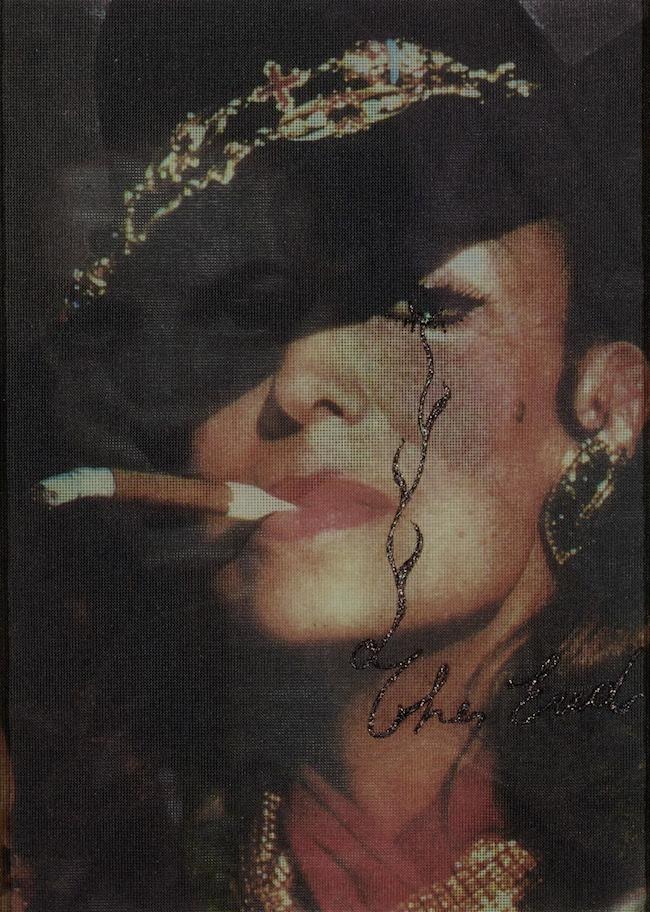
Francesco Vezzoli. The end – La bandita, 2002. Videoinsight® Collection
And then I wrote a second book about the Videoinsight® method, and I opened my first Videoinsight® Centre. I chose Turin for the centre because it’s very centrally located, and it’s easy for people to get there. This place is not big; it’s only 400 square metres. But it’s exactly as big as it needs to be. For the past five years, a hundred people have gathered here on Wednesday and Thursday evenings from 19:00 to 21:00. All sorts of people, and every week it’s different people. Visits to the Videoinsight® Centre need to be booked in advance, but they’re free of charge. Because all of my projects are free. I don’t make a profit from them. And so, all of the people who’ve arrived sit down and look at a piece of artwork. It might be a video, a photograph, an installation, a painting...the medium is not important.
Do all one hundred people look at only one piece of artwork all evening?
Yes. One hundred people sitting there and looking at only one piece of artwork and sharing their personal interpretations about it together. There is no leader, no discussion, no truth and also no result – there’s only the experience of giving something to others and receiving something from others. In a way, this approach is revolutionary. There’s only one work of art at a time because I believe that only by looking at one work of art for a long time can we understand it, immerse ourselves in it and merge with it. It’s not like in a museum, where there’s lots of artwork around you. Here there’s only one...and one hour. And you’re together with that work of art – you experience it, you interpret it inside yourself, and the art becomes a stimulus for each individual journey into yourself. And you can do what you want during this time – listen to other people’s interpretations or just be with yourself in silence. It’s a gift. The gift of a unique experience. And because we get different people every time, every meeting is different.
Do the same people sometimes return?
They can return or not return. The goal of the Videoinsight® Centre is that it’s a place where every week one hundred people can come, look at a work of art and express their insight. It’s not therapy; it’s an experience, it’s a chance to improve your psychological evolution through artwork. Because the artwork is all from Videoinsight® collection, and all the artwork in the collection has a psychological impact.
How do you choose the artwork? How can you be sure that the work of art will have a psychological impact and do it in the right way?
I choose the artwork based on my professional experience. I can choose the right works of art to help people. I try them on myself, and I try them on others during therapy.
The Videoinsight® Centre in Turin was the first, but it’s no longer the only centre. There are others in the world. And the Videoinsight® Centre also serves as an exhibition space. We’ve organised 16 exhibitions over the past five years, some of which have been solo exhibitions.
But, as I said earlier, the most important thing for me was to gain approval for using this method in medicine. Four years ago, I decided to do an experiment. I chose the field orthopaedics. Why? Because I’m crazy about Frida Kahlo. For very subjective reasons. I started the first study in orthopaedics at the Rizzoli hospital in Bologna. It’s one of the best orthopaedic hospitals in Italy and all of Europe. As a part of my research I showed 16 videos to 100 patients after they had had ACL reconstruction. In order to restore movement of the knee after a tear of the anterior cruciate ligament, the ligament is reconstructed with a graft. In the study, I showed one work of video art (one of 16 different videos) to people who had undergone this operation. They saw the art on the day after their operation, and then they had to watch that same video three times a week for the next three months. Like medicine. At first, they watched the video at the hospital, and after that at home. It was a specific work of video art, and its goal was to speed the patient’s recovery and rehabilitation after the knee operation. A so-called control group was shown a different work of video art, but that had no specific healing qualities.

Ronald Ventura. Mirror, 2012. Videoinsight® Collection
We then tested the patients after three, six and eight months. The results were unbelievable. Even after just one month, patients who had watched a special video with Videoinsight® effect were in considerably better health, they began walking quite a bit sooner than the other group, and they felt less pain during the recovery process.... We published the results of this study in PubMed and other professional publications, they were presented at conferences worldwide – in Toronto, Hiroshima, Buenos Aires, Amsterdam, Sofia, Lyon, London, Rome .... Right now, we’re doing seven other studies in various medical fields. For example, at the Geneva hospital we’re showing specially-selected video art to patients with a particular type of back pain. A couple of months ago we began a study in Italy to determine how the Videoinsight® method can help people with Alzheimer’s disease. The results are really serious, and in 2014 the medical school at the University of Bologna began a separate, independent course dedicated to teaching the Videoinsight® method to doctors and curators. I direct this course together with six other teachers. One of them is Giacomo Rizzolatti, an Italian neurophysiologist and researcher who was on the team that discovered mirror neurons in the early 1990s.
In addition to those mentioned above, I have one more project – a Videoinsight® hotel. I began it one year ago in Beirut, in conjunction with the Phoenicia Hotel. Each of the 800 rooms in the hotel has access to a separate Videoinsight® television channel, which shows 24 videos round the clock, 24 hours a day. In the future, I’d like to incorporate such a channel in other hotels, too, because my idea is that art is for life, art is for everyone. Art is for every moment. It is not only for collectors. It is not only for museums. Art is for everyone. My whole life is dedicated to sharing art and the concept about art, more and more throughout the entire world. Everywhere. The Videoinsight® collection, the Videoinsight® foundation, Videoinsight® centres, the Videoinsight® method, Videoinsight® research, the Videoinsight® advanced course – that’s my pyramid of Videoinsight® elements. It’s the result of the interaction between my life and my profession.
This December, at the Videoinsight® Centre in Turin, we’ll be beginning a new programme called I Love You. It will be dedicated to love history, love problems and love thematics, and we will show only artworks about this theme. Energy, Eros, Thanatos, attraction, passion, attachment, intimacy, nourishment, tenderness, rebirth, emotion, falling in love, affectivity, fertility, creativity, ritual, redemption, magic, mystery, relationship, communication, memory, history, imagination, reciprocity, confidence, courage, empathy, dreams, prophecy. But the unknown, risk, dependence, repetition compulsion, conflict, betrayal, manipulation, crisis, separation, abandonment and loss will also be crucial issues. All of the artwork present has high Videoinsight® impact. It provokes interior visions, illuminations, emancipatory discovery, change and achievement of psycho-physical wellbeing. It stimulates free mental association, interpretations, narrations, emotional resonances and insight.
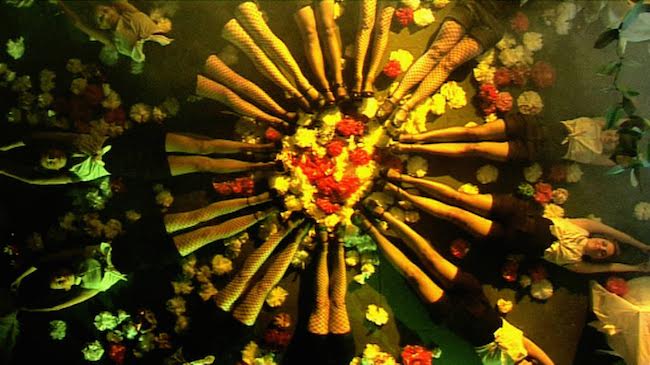
Marinella Senatore. Speak Easy, 2009. Videoinsight® Collection
You mentioned Frida Kahlo as one of your inspirations. Was art a form of therapy for her as well?
I think that art is potentially therapy for everyone. Not only visual art. And not only for spectators or collectors, but also for the artists themselves. Art is not only a solution; art is also an incredible way to find good energy, to find the strength to deal with our personal problems. Frida Kahlo was an example, but not the only one. I think all people that touch art are looking for something. For me, art is life. It was never the money or speculation that interested me. I live in the art system as a collector, but I also feel very free from that system. I’m free because I choose works of art personally, and I’m also free of any trends. I choose what I need and what I believe might be necessary for other people, too. I choose for me, for my patients, for the people at Videoinsight® centres all around the world, for patients in hospitals. My approach is simple – I discover something, I meet something, or something meets me, and I’ve either got insight or not. In ten seconds I immediately feel it.
Have there been situations when you’ve felt a piece of artwork seems completely empty, as if it has no energy at all, no story?
Of course. But I can do a selection. Art that touches me and art that doesn’t touch me. I look for art that is necessary. Art that can touch quickly, deeply, totally – the brain, the heart, the soul. Art that expresses primary needs, urgent needs. And art that can catch, or touch, all people. I don’t like artwork that’s too complicated. I don’t like it if I have to read too much information, too much text, in order to understand a work of art. That’s so complicated.... I don’t like art that places people in a bad situation – oh, I don’t understand this artwork, so that means I’m not educated enough, I’m not good enough for contemporary art.... Art must provoke, but at the same time art has to help the viewer catch the meaning. It has to be able to create a narrative.
Right now, in one of Milan’s hospitals, artwork is being shown on a plasma screen in the waiting room, and people can watch it as they wait to see their doctor. And I’m so relaxed, because I’m sure that all the people who go to that hospital can watch those videos with no problems, because none of them shows anything vulgar, aggressive, offensive, brutal or ugly.... And I’m sure that all people, even those who maybe have no experience with art, can fall in love with the videos, can feel the artwork and can find something in it. Be touched by it.
Some artwork is very powerful and is able to do it. But some artwork is only for a few people, maybe for a few collectors and not for a Videoinsight® project.
.jpeg)
Nathalie Djurberg. Untitled Acid, 2010. Videoinsight® Collection
Contemporary art can sometimes also be quite disturbing and full of contradictions, dark desires, etc. For example, Tracey Emin, whose art is merciless and brazen self-exposition, full of passion and suffering. Can such art also be used in therapy?
Art must not be just beautiful or simple. Art must be able to provoke, shock, tear down previous ideas and assumptions, and thereby change your previous “frame” of thinking. I like provocative art, for example, Nathalie Djurberg’s videos. But I can only use some of that artwork in therapy and for showing to patients. There is a limit, a boundary, and I’m very careful to respect it. I realise that if I step over this boundary, it could be too much for the patient. Sometimes the artist’s idea is to create something very ugly, very brutal. Art like that is not appropriate for a Videoinsight® project. It’s impossible for me to imagine showing my patients something that transforms their mood in a negative way, or negatively transforms the mood of the people I invite to this place. That’s the opposite of my mission.
I watch between twenty and thirty videos every week. As one of the biggest video art collectors, I receive them from all over the world – from galleries, curators, artists. I watch everything, because it’s my passion. I’m also addicted to it a bit. I watch, watch, watch.... But when a work of art puts me in a depression, I stop watching it. I want to become better with art, not to be sad after I’ve seen art. Also, art that I cannot understand has no sense for me. I respect it and assume that such a work of art definitely has a deeper meaning, because the artist wanted to put a sense of something in it. But if I’m not able to catch that meaning, I don’t choose it for my collection. For example, I can watch one hundred works of art and maybe choose only four or five. Only a few works of art are good for Videoinsight®, because it’s not enough for the artwork to just have an idea. It must also have a narrative. And also, everyone who sees it must be able to comprehend this meaning. Of course, their interpretations will be different, but a work of art must address people. For example, none of the artwork in the Videoinsight® collection has a political or religious message. I don’t show special videos for Muslims or for Christians. My approach is different.
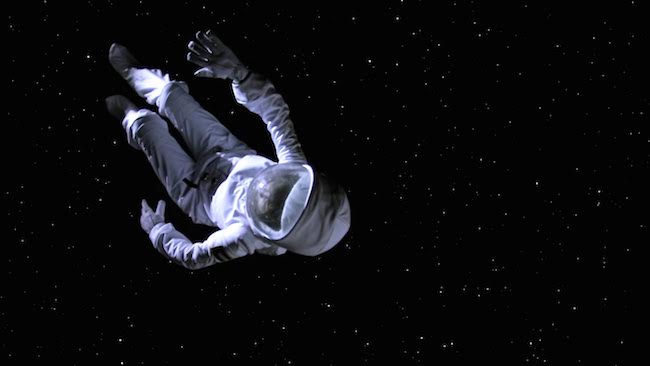
Larissa Sansour. A Space Exodus, 2009. Videoinsight® Collection
I think one of the most important words in life is “gratitude”. I’m full of gratitude. Gratitude for many reasons – gratitude for the artists because they make art by expressing themselves; gratitude for patients because they were a mirror for me, they gave me interpretations of artwork and I could thus create the Videoinsight® method. Gratitude to medicine because traditional medicine – including the university – opened its doors to contemporary art. It was revolutionary, but it will be the future. I’m full of gratitude because I can buy artwork and share it with people all over the world. The Videoinsight® foundation is the fortune and testament of Rebecca Russo. The Videoinsight® project will forever be for everyone. The foundation has its mission. The Videoinsight® method exists, it’s been approved by science, it’s taught at university. I feel I’ve done it all. I’ve finished my circle. And I’m full of gratitude.
But you’re still young....
I will go on, but I’ve already reached the most important goals. Because the method is approved in medicine, it’s being taught at university, and that means that the method will live. Ok, I have a collection like other collectors do, but the way it is made and how I’m using it is different. For me, artwork isn’t just objects with certificates, an investment that I keep in a depository. Artwork is something that is necessary to help people. This is really my point.
What do you think about the role of museums today? Maybe in the future museums could become the new hospitals?
I like museums very much. I think I’ve seen almost all the important museums in my life. And I hope that the number of visitors to museums only increases in the future. For example, I very much like the new Whitney Museum in New York designed by Renzo Piano. In August, it was open until ten o’clock in the evening, and at nine o’clock there was still a line of about a hundred people waiting to get in. I thought that was wonderful, keeping the museum open so late. In Washington, for example, all of the museums are free of charge and always full of people. I was in Stockholm recently, where the museums are very expensive. A ticket costs an average of 20 euros. I visited five museums in one day, also the ABBA museum, and I was lucky to have 100 euros. But I assume that not all people can afford it. I hope in the future more and more museums will be for free. And that they’ll collaborate more with schools and society as a whole. I hope that the small world of contemporary art will open its doors, because connecting with art is a unique experience for each and every person.

Tala Madani. Luminaries, 2013. Videoinsight® Collection
The Videoinsight® method is based only on contemporary art. Does classical art, such as the Old Masters’ paintings and sculptures, also have this power to heal?
I’ve only collected contemporary art. The artwork that I’ve chosen lives within me and I can use it in my practice only because I know those works of art. I feel them. I think some works of art from the past can also be therapeutic in certain ways. But very few. In any case, much fewer than contemporary art, because back then art was created with a different goal in mind. It was documentation, entertainment, the embodiment of absolute beauty.... The task of provoking the viewer, of “getting under his skin”, is already encoded in contemporary art; it’s not seductive. I think contemporary art has a much greater therapeutic effect because it addresses the contemporary world and its problems.
I also have some paintings from the 18th century in my collection, but I cannot use them to help other people. I can only show off their beauty, because they are full of beauty. Looking at beauty is always a good way to feel better. But it’s not enough. Although, if we look at Michelangelo’s Pietà, we can do some Videoinsight® because in it we see a mother and child. Likewise, Rodin’s The Kiss can also definitely be used for the Videoinsight® method. We can do it with some works of art, but not with other works of art. But we also have to select specific works when we’re dealing with contemporary art.
Could you use, for example, Jeff Koons for Videoinsight®?
I can do it, yes. Of course. I can do it with Jeff Koons, with Damien Hirst, with Anish Kapoor. Because there’s a concept in Koons’ works. And that’s the most important thing. I have Hirst’s and Kapoor’s works in my collection, but my collection also has many works by new artists. For me it’s all the same. When doing Videoinsight®, the name is not important – it’s not important whether the artist is a superstar or not. We never discuss the artist’s CV at Videoinsight® centres, and we don’t talk about how the work of art was made. The artist’s name is revealed only at the end of the session.
But, if someone arrives at the centre who knows a lot about art and immediately recognises the artist, doesn’t that in some way lessen the effect of the art? From the aspect of therapy.
Of course, art collectors who love art might recognise the artist. But because they live through art on a daily basis, they can do a wonderful Videoinsight® session. On the other hand, snobs who are only interested in the price are rarely open enough to do Videoinsight®.
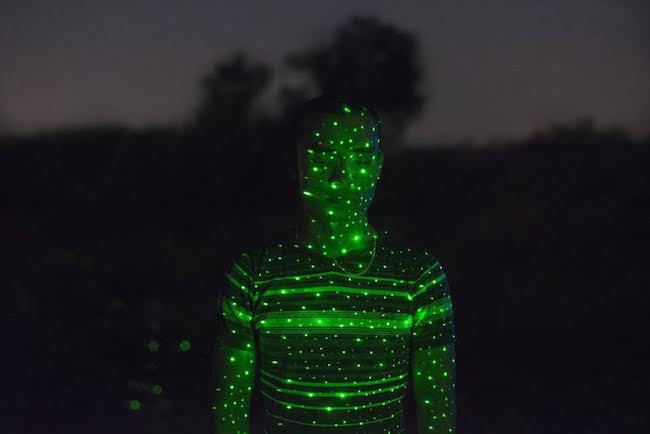
Tobias Zielony. The street, 2013. Videoinsight® Collection
Do you think images are more powerful than words?
Yes, because words touch your brain, but images touch your subconscious depths. We dream with images. Children are shocked more when watching images than hearing words. Images are more powerful than words. But, for example, in the case of ‘If you will it, it is not a dream’ by Yael Bartana we have the words in neon lights. They are words, but at the same time it’s also an image. Because you see, you look at the words; you don’t just think about it or listen to it. We can also do Videoinsight® with some messages.
At the Videoinsight® Centre, where we are right now, there’s a photo on the wall from one of Marina Abramović’s performances from 1990. It’s called Dragon Heads, and in it we see Abramović sitting in a chair with a python coiled around her, covering her eyes. This photograph is also on the cover of your book Videoinsight®: Healing with Contemporary Art. What does it mean to you?
More than 20 years ago Marina Abramović had a performance during which she sat on stage for more than six hours with snakes on her body. I was sitting on a similar chair in my clinical office with snakes on my mind and on my heart. Except that in my case these snakes were the people’s problems that I tried to help them to solve. And I chose this work of art because it represents me, Rebecca, sitting in a clinical setting and helping people. The snakes were my patients’ problems. But I nevertheless felt completely calm sitting in that chair, because although I found myself in that situation, I was able to manage it. This photograph is very powerful, because it can be interpreted in very many different ways. It doesn’t speak only about fear, because, you know, the snake is a symbol of many things – it’s also a sexual symbol. Performances are a very important part of my collection, because both in performance art and in life there is total confusion. For me, life is art. Life is a performance in some way. If you asked me, “What does art mean to you?” That would be my answer. I will also write it into my will.
When working with private clients, is Videoinsight® the only method you currently use?
Yes, I work only with this method. If you need me, my help, for your anxiety or other problems, you can come in at any time. First, I will show you some artwork, and through this process I will discover what you need, the source of your problem, your vulnerability. And I work with you only with art.